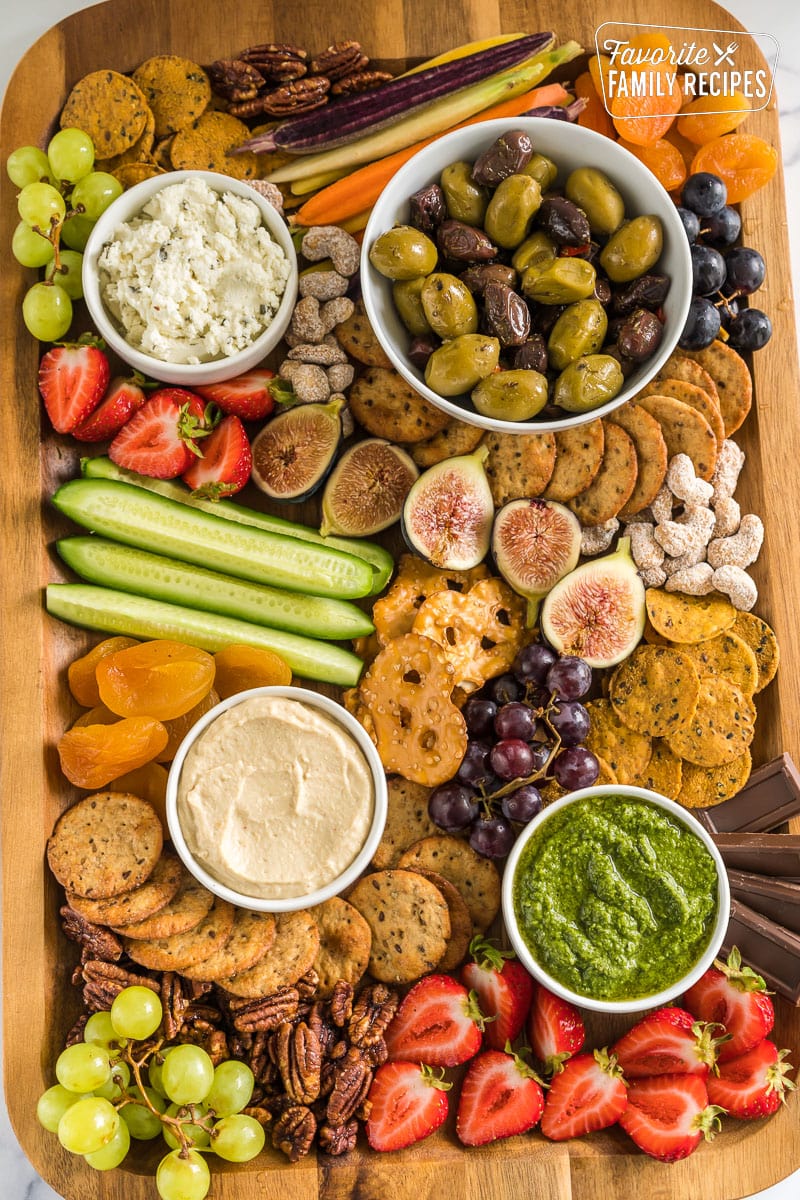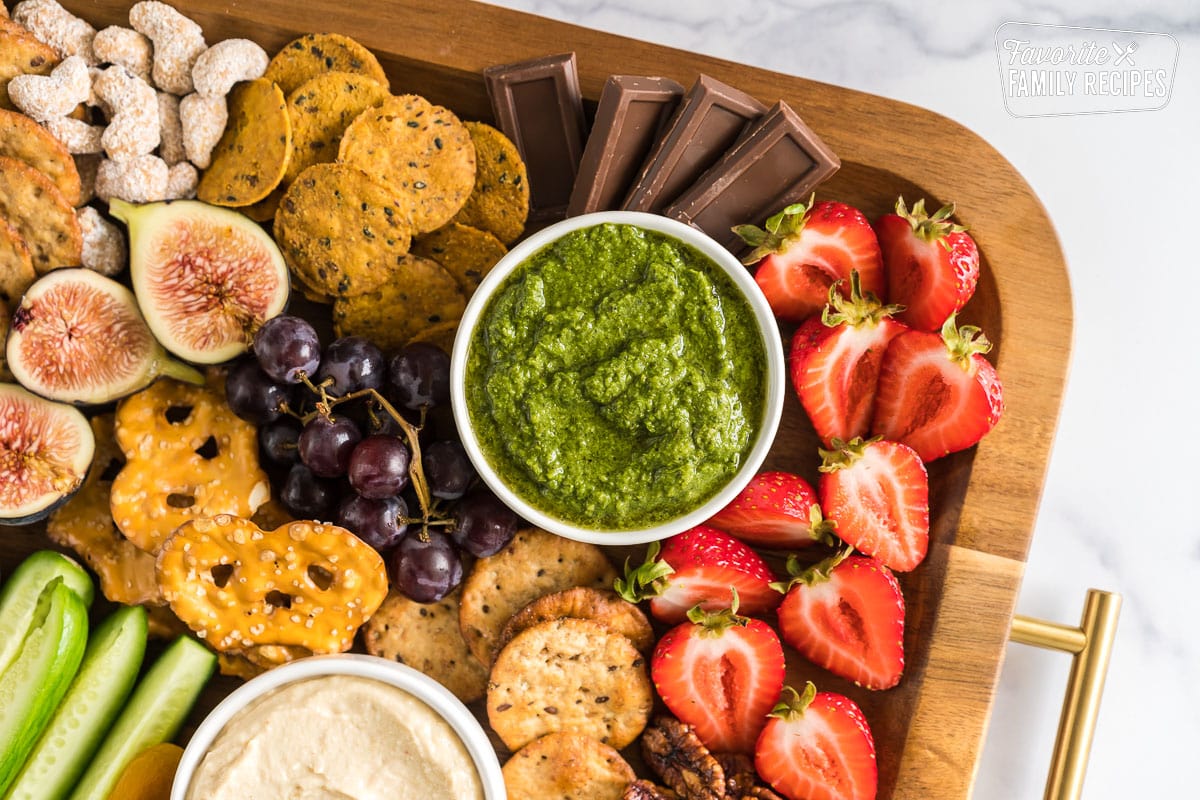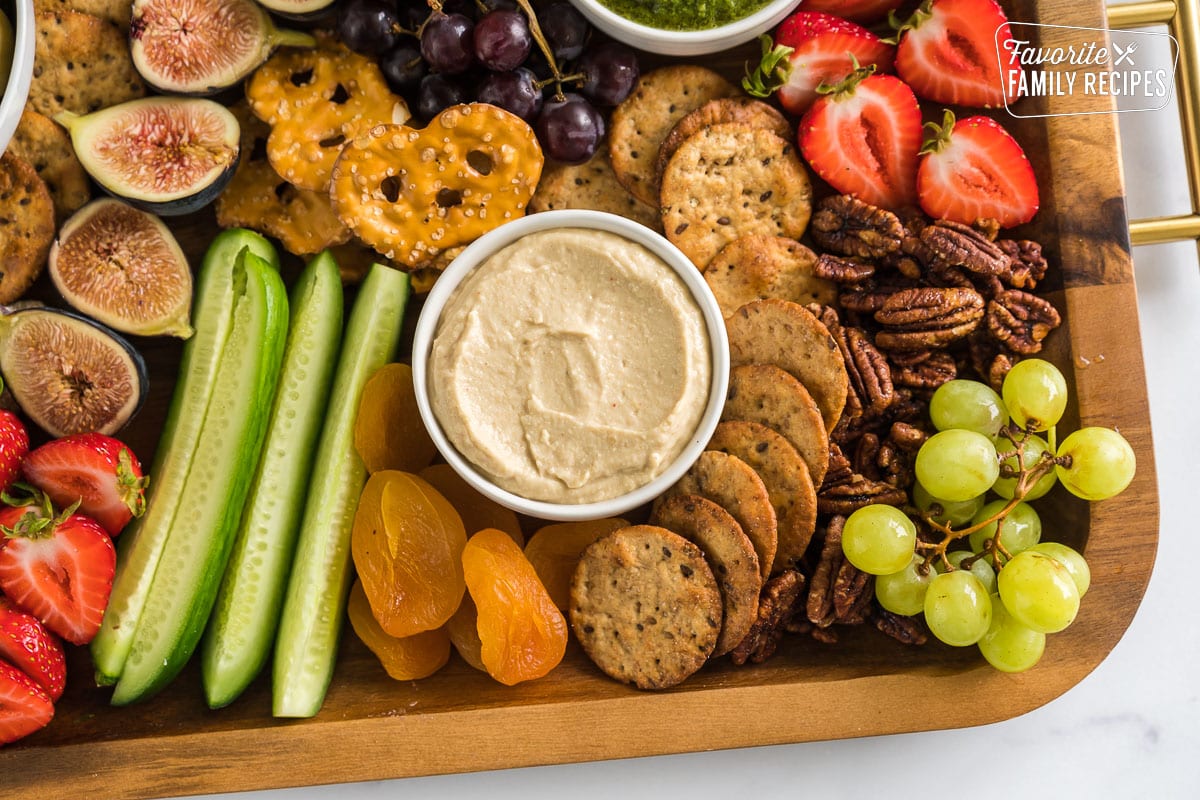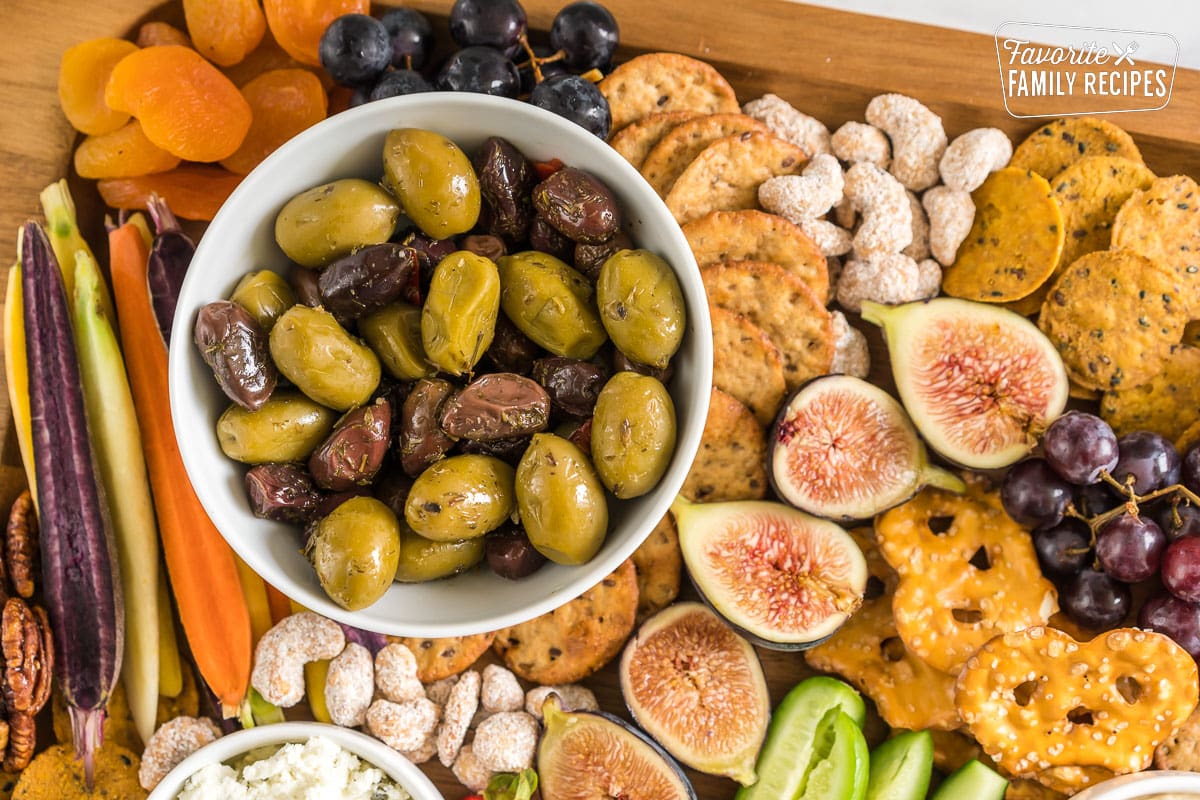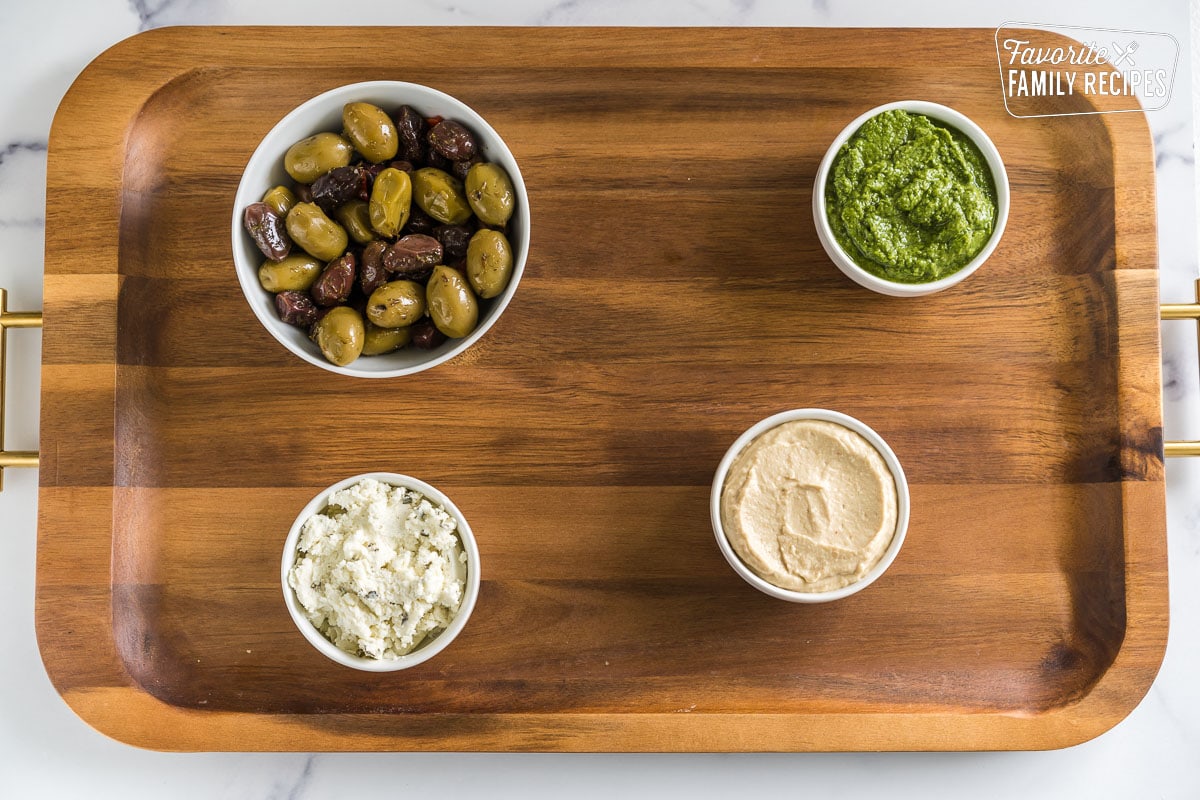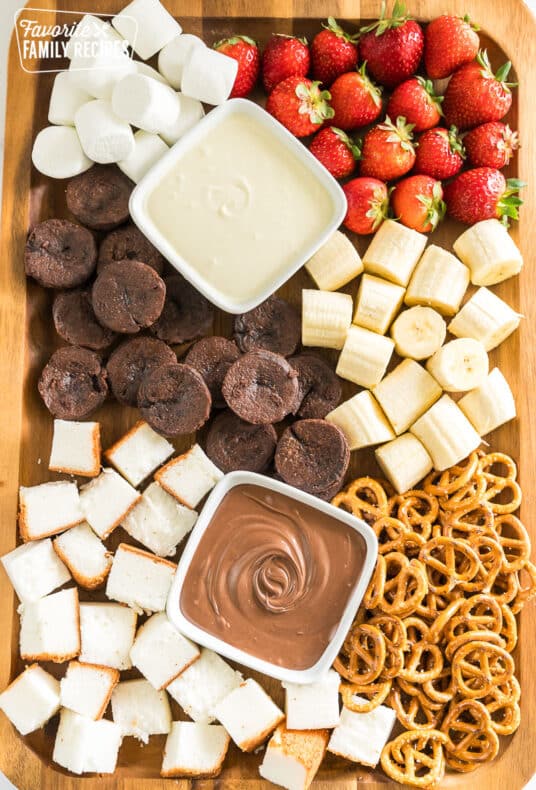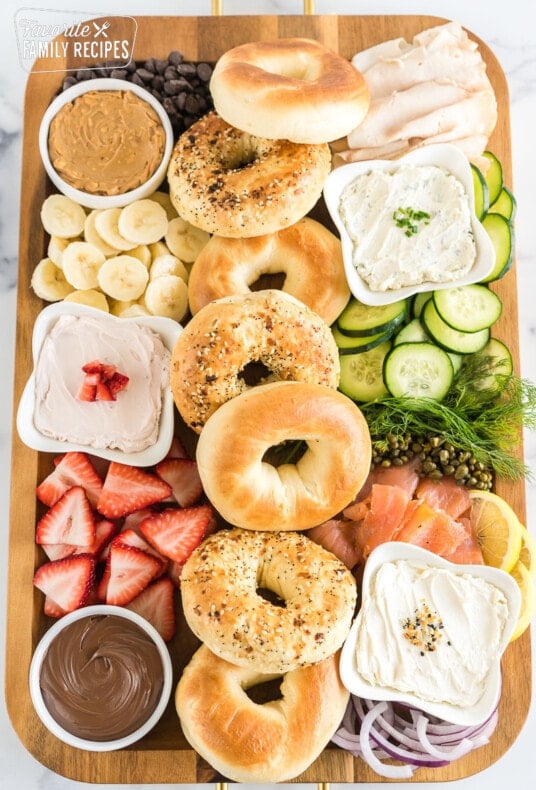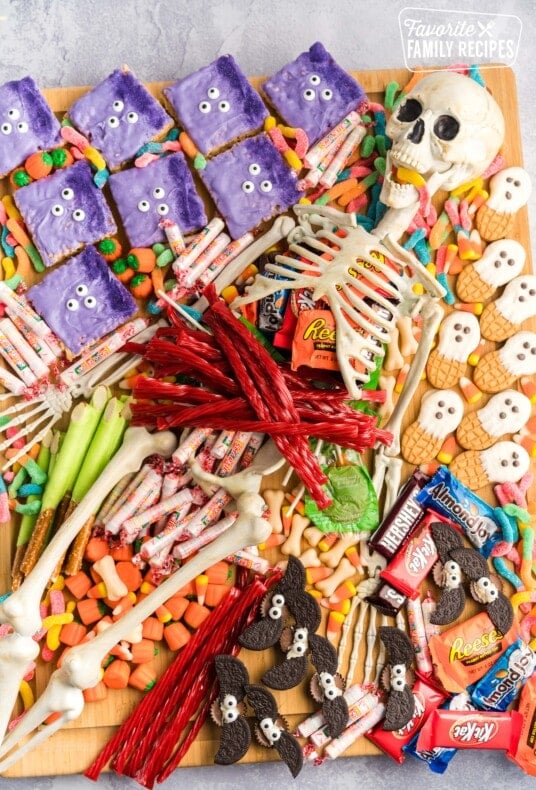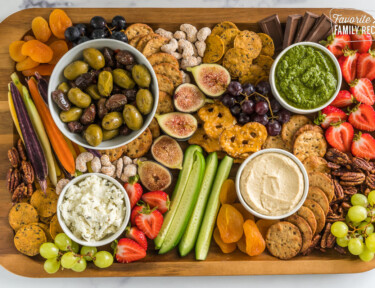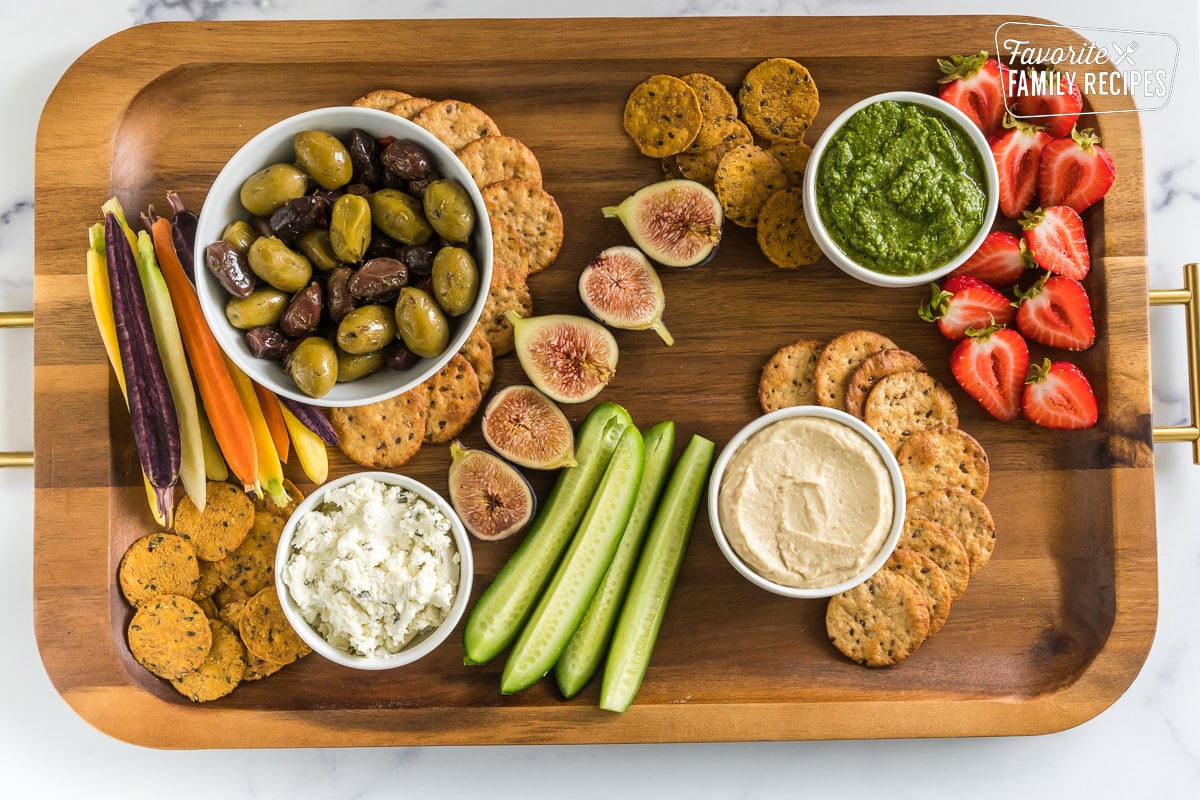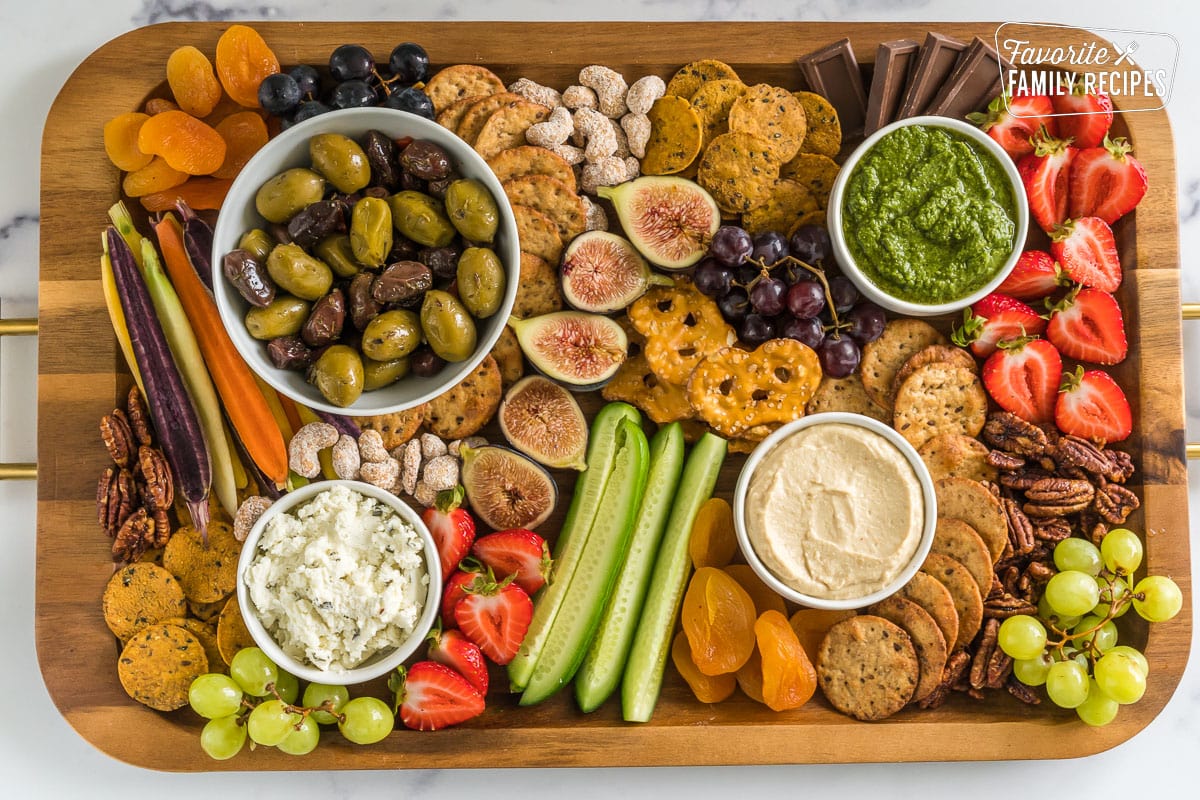Welcome to the world of sustainable, plant-based, vegan deliciousness! It doesn’t matter if you are a vegan pro or just starting out, we will show you how to make a Vegan Charcuterie Board that is as delectable as it is pretty. Charcuterie may mean “cooked meat” but you can still put out a vegan version that will stun even your most environmentally conscious guests.
Ingredients in Our Vegan Charcuterie Board
Vegan Pesto – bursting with basil and nutty flavor, vegan pesto makes a great spread for your board Hummus – a creamy and versatile plant-based dip for veggies and crackers Boursin Plant-Based Cheese Spread – so luxuriously creamy you won’t believe it is plant-based! Marinated Olives – plump, briny delights marinated to perfection with herbs and spices Crackers – I used pita crackers, pretzel slims, and sweet potato crackers Dried Apricots – sweet, chewy, and also a pop of color for your Vegan Charcuterie Board Persian Cucumbers – these tiny cucumbers are so crisp and refreshing Petite Carrots – small and sweet, and they often come in multiple colors Strawberries – I like to slice them in half with the greens still attached for the best look Figs – sliced in half, figs add a visually stunning and elegant touch Cashews – buttery and salty to contrast the fresher flavors Pecans – these nuts add crunch and a rich, earthy flavor Grapes – a classic charcuterie board accompaniment Vegan Chocolate – finish it all off with a little dark chocolate – you cant go wrong!
More Ideas
Fresh or dried fruits – raspberries, apples, cherries, blueberries, kiwi Vegetables – bell peppers, roasted red peppers, pickles, cauliflower, broccoli, cherry tomatoes, celery Nuts – pistachios, almonds, walnuts Starches – pita bread, crostini, ritz crackers, triscuits, wheat thins Spreads – fruit preserves, olive tamponade, chutney, marmalade, jalapeno jelly
Classic Charcuterie Board vs Vegan Charcuterie Board
The word “Charcuterie” (pronounced “shar-KOO-tuh-ree”) is a French term for displaying a variety of cured meats, mostly pork. Originally they included things like salami, prosciutto, and sausages. Modern charcuterie boards can have any variety of meats, cheeses, fruits, veggies, olives, nuts, and sauces. Typically the boards are arranged in an aesthetically pleasing and abundant fashion. Check out our full step-by-step guide to making a classic Charcuterie Board.
Tips for Creating Your Vegan Charcuterie Board
This recipe can be used as a jumping off point for your own creations! If you want to copy exactly what I did, then I can help you do that. However, if you are wanting to create something all your own, I have some tips for you.
Charcuterie Boards are all about looking full and abundant. If you have a smaller group, then start off with a smaller board so you can fill it up! The platter I used for this recipe was 13×23 inches, but you can use any size depending on your needs. You can also use a large cutting board. Head to a grocery store with a bulk section. Then, you can pick lots of different items without having to buy a huge box of each one. Try to find ingredients of all sizes, shapes, textures, colors, and flavors. The more variety, the more vibrant and interesting your Vegan Charcuterie Board will look! When you are styling your board, start with the bowls, then add larger items, then smaller items, then garnishes. Try to arrange it so similar colors aren’t touching. This will create depth and a more pleasing visual! If I am serving this at a party, then I will bring along any remaining items that didn’t make it onto the board. Then, if something runs out I can replenish it.
Recipe Tip
Read Next: Charcuterie Board Ideas
More Charcuterie Board Recipes
How to Make a Vegan Charcuterie Board
How to Make a Charcuterie Board
Dessert Charcuterie Board
Brunch Charcuterie Board
Halloween Charcuterie Board
We want to hear from you! Please leave a review. Rate and Review
